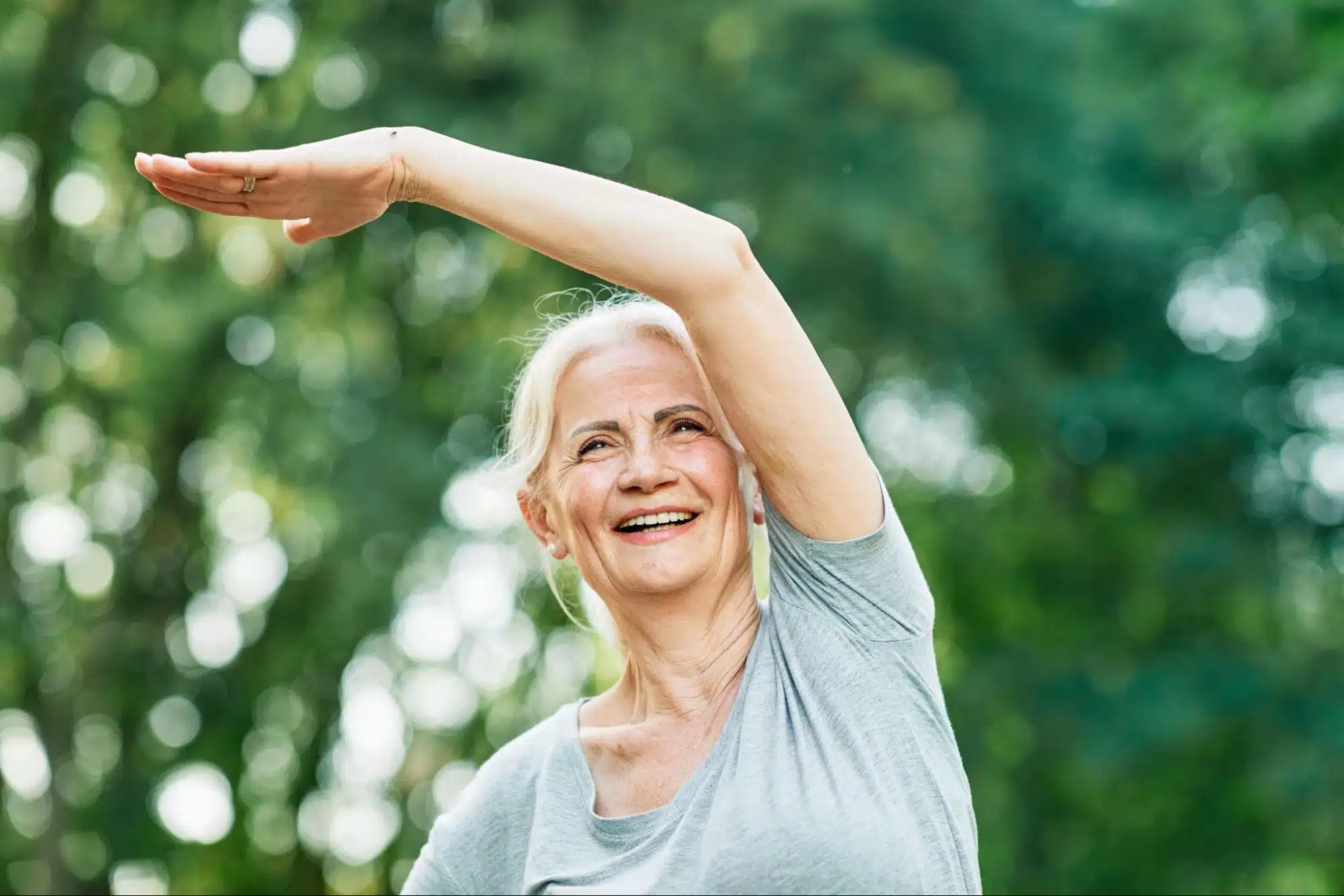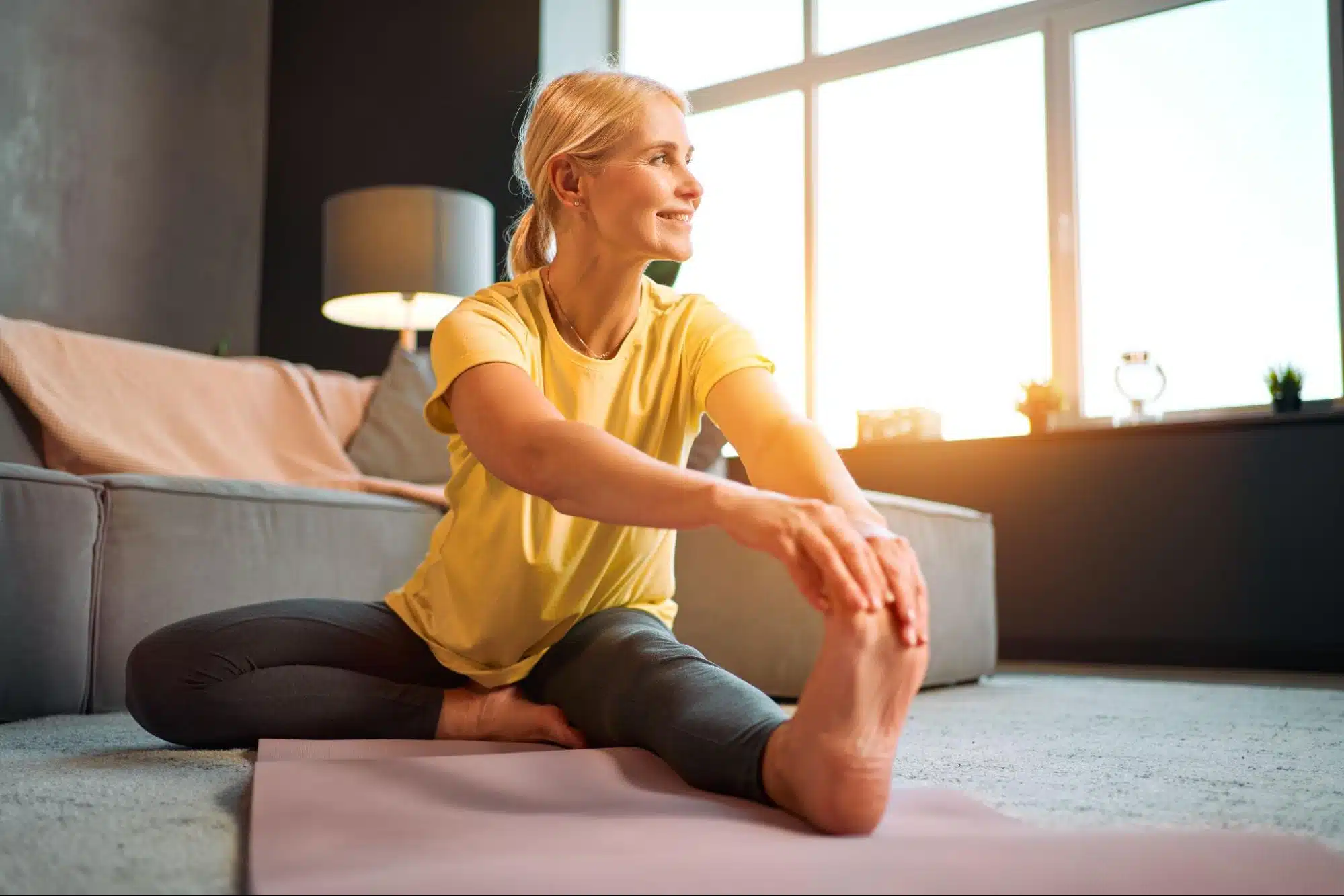Flexibility Exercises for Seniors: Staying Agile with Age
Author: Lifeline Canada
Date: 19 November 2024
As we age, maintaining flexibility becomes increasingly important for overall health and mobility. For example, one study of older adults revealed that shoulder flexibility decreases by about 5-6 degrees per decade, significantly affecting daily activities like dressing or reaching.
Staying active helps seniors live healthier, happier lives, but flexibility plays a key role in enhancing balance, reducing stiffness, and preventing falls. Incorporating flexibility exercises into your daily routine can significantly improve your ability to carry out everyday activities safely and independently.
This guide focuses on the importance of combining flexibility and strength exercises to promote better mobility and stability.
Disclaimer: Don’t disregard professional medical advice, or delay seeking it, because of what you read here. This information is not intended as a substitute for professional consultation, diagnosis, or treatment; it is provided “as is” without any representations or warranties, express or implied. Always consult a healthcare provider if you have specific questions about any medical matter, and seek professional attention immediately if you think you or someone in your care may be experiencing a healthcare condition or medical emergency.
The Benefits of Stretching for Seniors
Stretching exercises offer a range of benefits for seniors, helping to maintain joint flexibility and alleviate discomfort. As we age, joints tend to stiffen, limiting our range of motion.
- Regular stretching keeps the joints flexible, making it easier to perform everyday tasks like reaching, bending, and walking, which is especially important for those with arthritis.
- Flexibility exercises also enhance balance and coordination. By increasing flexibility, seniors can reduce their risk of falls—a leading cause of injury. The connection between flexibility and balance means that regular stretching can help seniors move more confidently.
- For those managing chronic conditions like diabetes or arthritis, stretching can provide relief by reducing muscle tension and improving circulation. This can alleviate discomfort and increase ease of movement.
- The mental benefits of stretching should not be overlooked either. Engaging in flexibility exercises has been shown to reduce stress, improve mood, and increase physical strength when combined with movement, further boosting overall well-being.
Preparing for Flexibility Exercises
Before starting any flexibility exercises, it’s important to consult with a healthcare provider. Seniors, particularly those with pre-existing health conditions, should always get medical clearance to ensure their exercise routine is safe and suitable for their individual needs.
Warming up is an essential step in preparing for flexibility exercises. A light cardio activity, such as walking or marching in place, can help increase blood flow to the muscles and prevent injury. Start slowly, easing into stretches to avoid straining muscles. Over time, as flexibility improves, you can gradually increase the intensity and duration of your stretches.
Remember to stay hydrated and wear comfortable clothing that allows for easy movement. Hydration is key to maintaining healthy muscle function, especially during physical activity.
Upper Body Flexibility Exercises
- Shoulder Stretch: Begin by extending one arm across your chest, using your other hand to gently press it closer to your body. Hold for 20 seconds, then switch sides. This stretch helps improve shoulder mobility and reduce tension.
- Upper Back Stretch: Sit or stand tall, interlacing your fingers in front of you. Push your hands forward, rounding your back slightly to feel a stretch between your shoulder blades. This is great for posture and relieving upper back stiffness.
- Chest Stretch: Stand tall and clasp your hands behind your back. Straighten your arms and lift your chest upward. This stretch increases chest flexibility, which is crucial for activities like lifting and reaching.
- Neck Stretch: Gently tilt your head towards your shoulder, holding it for 20 seconds. Repeat on the other side. This simple stretch helps relieve neck tension and improves overall mobility.
- Arm Circles and Wall Push-Ups: Perform small arm circles to warm up the shoulders, then move into wall push-ups to build upper body strength while promoting flexibility.
Lower Body Flexibility Exercises
- Standing Quadriceps Stretch: Stand tall and hold onto a chair for balance. Bring one foot behind you, grabbing your ankle with your hand, and gently pull towards your glutes. This stretch helps improve balance and strengthens the muscles used for walking.
- Seated Knee-to-Chest Stretch: Sit in a chair with your back straight. Bring one knee up towards your chest, holding it with both hands. This stretch enhances flexibility in the hips and lower back.
- Hamstring and Calf Stretch: Sitting on the edge of a chair, extend one leg forward with the heel on the ground. Lean slightly forward to stretch the hamstring and calf. These stretches are crucial for maintaining mobility and preventing falls.
- Hip Flexor Stretch: Kneel on one knee with the other foot in front, forming a 90-degree angle. Gently push your hips forward to stretch the hip flexor. This stretch is essential for improving posture and alleviating hip tension.
- Chair Squats: Stand in front of a chair and lower yourself slowly as if sitting, then stand back up. This movement combines flexibility and strength for better knee and hip health.
Foot and Ankle Flexibility Exercises
- Toe Stretch and Ankle Circles: Sit comfortably and extend one foot. Flex your toes back and forth, then make gentle circles with your ankle. This simple exercise increases foot and ankle flexibility and helps prevent injury.
- Heel Raises and Foot Rolls: While standing, lift your heels off the ground, holding for a few seconds before lowering. Follow with foot rolls on a small ball to stretch and strengthen the feet.
- Toe and Heel Walks: Practice walking on your toes, then switch to walking on your heels. This functional exercise strengthens the lower legs and improves balance, helping to prevent falls.
Stretching Techniques and Safety Guidelines
During stretching exercises, it’s important to focus on steady breathing. Breathing deeply while stretching allows the muscles to relax, improving the effectiveness of the stretch.
To avoid injury, always perform slow, controlled movements. Avoid bouncing, as this can cause muscle strain. Consistency is key—aim to stretch regularly for the best results, starting small and gradually building up the length and intensity of your routine.
Using support, such as a wall or chair, can help maintain balance and stability while stretching. It’s important to listen to your body, never forcing a stretch or pushing beyond your comfort level.
Building a Stretching Routine
When beginning a stretching routine, start with 10-15 minute sessions, focusing on gradual improvement. Over time, as your flexibility increases, you can extend the duration of each session and incorporate more challenging stretches.
It’s essential to combine both upper and lower body stretches to ensure all major muscle groups are engaged. Focus on areas prone to stiffness, such as the hamstrings, hip flexors, and shoulders. These are key areas that affect mobility in seniors.
Creating a sustainable habit means incorporating flexibility exercises into your daily routine, whether in the morning, evening or even during short breaks. Working with a fitness expert or healthcare provider can help tailor a routine that meets your specific needs, ensuring long-term success.
How Lifeline Canada Can Help
Staying safe while staying active is essential. With Lifeline Canada’s new On the Go Smartwatch, you can continue your exercise routine and outdoor activities with peace of mind. This discreet, wearable device provides emergency access and fall detection wherever you are.
Disclaimer: Please note that coverage inside and outside the home is provided where third-party cellular network coverage is available and subject to device location, environment, equipment, and facility conditions. The signal range may vary. Lifeline Canada may not always be able to determine your location. While this system includes fall detection, no fall detection device can detect 100% of falls. We recommend you push the button for help in the event it is needed.
Stay Flexible, Stay Active
Flexibility and strength exercises play a crucial role in maintaining overall health and mobility as we age. By committing to a regular stretching routine, you can significantly improve your balance, reduce your risk of falls, and enjoy a more active lifestyle.
Incorporating flexibility exercises into your daily routine is a powerful way to stay independent, mobile, and healthy. Whether you prefer the mobility of the On the Go Smartwatch or the security of the HomeSafe with Fall Detection system, these products empower you to stay flexible and active, giving you peace of mind knowing help is always close by.
Connect with us today to learn more about how our medical alert devices can support your or your loved one’s active lifestyle.
What You Should Do Now:
Here are 5 ways we can help you or your loved one live safer and more independently at home as long as possible:
- Get our latest tips, tools and resources straight to your inbox. Sign up for our monthly newsletter.
- Not sure if the time is right for a medical alert service? Take this quick assessment to find out.
- If you would like to learn how to live a healthier and safer lifestyle, go to our blog or visit our resources section, where you can read and download guides.
- Wondering which medical alert system company is the best for your needs? We’ve put together a guide comparing the best medical alert systems for you.


